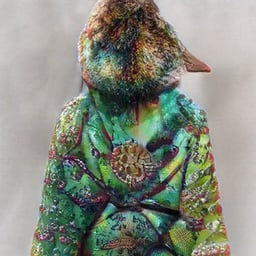Is that (still) a thing? How safe is it to rip Blu-rays for seeding?
Edit: clarification. I mean the invisible kind of watermark used as a unique identifier of the disc and associated file.
As they are mass produced the best they could narrow it down to was a region.
Could they not nust change a single pixel in the entire movie and use that as the identifier? Why would that be more expensive to do during production? It’s not more expensive than giving your product a product ID, isn’t it? Surely, modern software and production can do this cheaply.
I’m no expert on this, that’s why I’m asking.
They physically print the disks, so each one from a print line is the same. It would be too expensive to dynamically print every single disk uniquely.
Additionally, there would be no way for a printed disk to be tracked to a specific sale. We just don’t have that level of granularity in our sales. Best Buy scans the UPC barcode of a disk to sell it to you, they don’t track the specific serial number of each disk to know that you bought which one.
Beyond all that, the ripping process will tend to destroy any reliability of having a manipulated pixel remain exactly the same unless the person uses absolute lossless with no compression.
Not if the discs are mass manufactured. To manufacture them, they produce a master image containing the content, make a glass master from that, and use that to press large numbers of identical copies. To have individually watermarked streams would require making a unique master for each copy.
The best they could theoretically do is to have a write-once area on each disc that has a serial number inscribed onto it in the factory, and have the Blu-Ray spec require that all players read this and then add a watermark to the video they just decrypted from the mass-manufactured disc before passing it on to be displayed, though that would be more fragile, and soon enough noncompliant players would appear, and it would be common knowledge that this exists.
As for why they don’t write the whole disc the way they could write a serial number, that’s much like why they don’t make the whole airplane out of black-box flight recorder material: it would take a lot more time (both in writing and in creating a unique image for each copy) and be a lot more expensive. I understand that they do this for screeners sent out to Academy Awards jury members (which would be just on artisanally burned BD-R discs), though it wouldn’t scale to the mass market.
Think about it logically. How would they track an individual purchaser even if it was watermarked? Say i buy a disc with cash from a second hand store. What would link my identity to any purported watermark? Nothing. For that reason alone I would strongly doubt watermarks on retail discs.
Screeners are probably marked though so if you’re a member of the Academy probably don’t seed those discs without precautions.
I’ve never seen any watermarks on my BR rips.
You don’t that’s the thing. I should have clarified my post.
You can add invisible watermarks to a bitstream to track the file back to the disc. Basically like an unique identifier. If you were to share that ripped Blu-ray illegally, the law enforcement could proof that you (as the buyer of the disc) ripped it.
Maybe for screeners where the volume is low. Commercial Blu-ray, it’s a lost cause with millions of discs.



